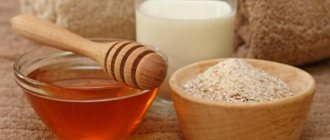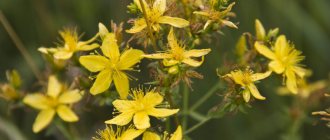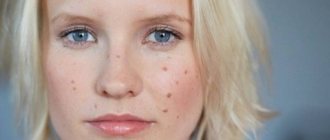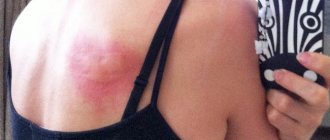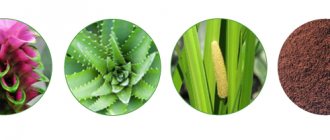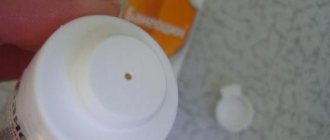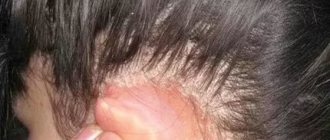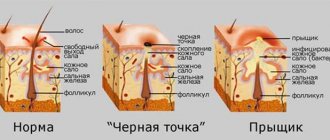Have you read the packaging of a new cosmetic product that you bought on Kisa.ua and plan to use on your face? A wise, self-respecting woman should make this a habit. After all, the condition of the skin will largely depend on what you treat it with day after day.
The problem is that some components are familiar to everyone (chamomile extract, aloe, collagen, hyaluronic acid, etc.), but some ingredients are hidden under unfamiliar names. One of these is allantoin , which many cosmetic and even pharmaceutical concerns include in their products.
This is a substance of natural origin, unique in its properties. It is credited with miraculous anti-aging, lifting and regenerating effects. Thanks to this, it is the main active substance in various medicinal ointments, gels and sprays, as well as in tightening masks, anti-aging creams, and concentrated serums.
So it’s time to take a closer look at what it is and how effective allantoin is for the face.
What is allantoin
Describing the physical properties of this chemical, we can say that allantoin is colorless crystals of small size, soluble in water (disappears easily and quickly in hot water, weakly and slowly in cold water). It can be found in nature in both plant and animal forms.
Allantoin of animal origin contains:
- in the bodies of all mammals except humans and primates;
- in the mucus left behind by the mollusks Helix aspersa Muller - southern European relatives of the large grape snail;
- in embryonic tissues of birds.
Allantoin of plant origin is found:
- in the rhizomes of comfrey;
- in soybeans;
- in sprouted wheat sprouts;
- in rice husk.
To care for problem skin, it is better to choose allantoin of plant origin. According to laboratory studies, it is the most effective in this regard. Accordingly, cosmetic products containing it will not only be of higher quality, but also more expensive than those containing allantoin of animal origin.
Why is the effect of this substance on the skin so beneficial? It's all about the composition, which contains many of the most useful components:
- glucose;
- glucosides;
- glucoronic acid;
- carotenes;
- mucopolysaccharides;
- tannins;
- fructose.
Thanks to this chemical composition, which has such a positive effect on the condition of the skin, allantoin is actively used in cosmetics : many products contain it as a wound-healing component. And not only!
Through the pages of history. In 1800, allantoin was first isolated as a chemical from the epithelium of birds. Since then, research on its properties has not stopped.
How is allantoin used?
Depending on the purpose for which allantoin is used, there may be completely different methods of application.
- If throat diseases occur, the active component is used as a gargle. Irrigating preparations based on allantoin also performed well. They help relieve inflammation of soft tissues and fight pathogenic microflora.
- For cosmetic purposes, this substance is effectively used in the treatment of scars. Treatment lasts about 30 days, depending on the situation.
- Allatoin effectively prevents and prevents skin aging. Therefore, cosmetologists recommend adding it to your favorite cream. The substance interacts well with other drugs, so you don’t have to worry about side effects.
- Allantoin is ideal for hair care: it has sebum-regulating properties and eliminates excess oily hair.
- Many people buy various vitamins in ampoules at pharmacies and add them to their shampoos and conditioners. Allantoin can be used for the same purposes.
Its main advantage is that it is suitable for all skin types.
If it is normal skin, then it will serve as a prevention of various dermatological diseases, oily skin will help get rid of sebaceous accumulations and cleanse clogged pores, dry skin will moisturize the entire surface of the epidermis, giving the necessary moisture.
In fact, allantoin in cosmetics is a universal remedy for many problems on any part of the body.
Its action is so mild that it does not harm a person, but only helps.
The effect of allantoin on facial skin
Cosmetic abilities are determined by the chemical properties of allantoin , which consist primarily of an astringent and anti-inflammatory effect on tissue. It is not for nothing that this unique substance is included in the list of anesthetics by the familiar World Health Organization.
Accordingly, this is a full-fledged drug, which was recently adopted by ubiquitous cosmetologists. According to advertising of some brands, this component of face creams and serums is capable of:
- soften the upper layer of the epidermis, covered with horny scales and dead cells, due to which they exfoliate quickly and without injury - this is the scrubbing effect of allantoin;
- stimulate tissue regeneration;
- rejuvenate, smoothing wrinkles and tightening age folds;
- quickly narrow enlarged pores, so all cosmetics with allantoin are recommended for the care of oily facial skin;
- in winter, save from peeling, effectively softening skin roughened by winds and frost;
- in summer, tidy up the epidermis suffering from the sun;
- quickly heal abrasions, wounds, microcracks on the face;
- relieve irritation;
- effectively prevent the formation of comedones (blackheads);
- dissolve stretch marks, scars and scars, making them almost invisible on the skin of the face;
- inhibit bacterial growth;
- minimize the irritating, aggressive effect of various surfactants on the skin of the face, eliminating the feeling of tightness while washing.
Despite such amazing medicinal and cosmetic properties, today there is a lot of talk about the fact that allantoin for facial skin is harmful , not beneficial. We hasten to assure everyone who is bothered by these rumors that this is not so.
Firstly, there are no arguments about what kind of danger allantoin poses.
Secondly, its safety was recently tested by the FDA - the American Food and Drug Administration and the CIR (Cosmetic Ingredient Review) expert group. They conducted a series of laboratory tests and found that allantoin is not dangerous in cosmetics for facial skin, in which its content does not exceed the norm. So let's take it and use it!
Additional Information. Allantoin is a rare substance that is not capable of causing side effects and is not toxic. The most effective concentration is 0.5-2%.
How does allantoin work in a cosmetic composition?
The basic property of allantoin is its ability to participate in the process of new cell formation through their division and reproduction. In other words, after applying allantoin to the skin, rapid cell regeneration occurs due to their proliferation.
A big plus is the fact that even a small concentration of allantoin in a cosmetic product helps demonstrate its unique properties.
Allantoin is actually an effective and efficient drug that is part of cosmetic creams, emulsions, and serums. It has a lot of positive properties, is non-toxic and hypoallergenic, easily eliminates skin imperfections and promotes its rapid recovery.
Allantoin as a drug
Despite the fact that we plan to use the cosmetic properties of allantoin, it should be treated exclusively as a medicinal product, since it has quite a powerful effect. Fortunately, pharmacists provide detailed instructions for its use, which it is advisable to study in advance before purchasing creams and face masks containing it.
Designations
Not all medications and cosmetics will contain allantoin under its real name on the packaging. Most often he hides there under the following names:
- 5-Ureido-2,4-Imidazolidindion (2,5-Dioxo-4-imidazolidinyl);
- Urea pura, Carbamid, Carbamidum, Ureaphil (urea, carbamide, since in laboratory conditions allantoin is a product of oxidation of uric acid);
- Allantoin (Alantoin, Allantoine, Allantonin);
- Glyoxyldiureid;
- 5-Ureidohydantoin;
- Cordianin.
Now you will know what is hidden under these foreign words in the composition of the cream you like - allantoin, which disinfects wounds and smoothes out wrinkles.
pharmachologic effect
As a medicine, allantoin has the following effects on damaged tissues and facial skin:
- Astringent;
- keratolytic (scrubbing, exfoliating);
- antiseptic, disinfectant.
The pharmacological properties of allantoin in creams and face masks become therapeutic and cosmetic.
Pharmacodynamics
Allantoin is able to penetrate deep into the dermal layers of the face, stimulating tissue renewal at the cellular level. It is not absorbed by the blood, but it is perfectly absorbed into the skin, drying without residue almost instantly after application.
Indications for use
You shouldn’t buy face cream with allantoin just because all your friends have already tried it or because you really want it. This is a medicinal product, which means that even for its external use there are indications and contraindications. It is worth using his services in the following cases:
- skin diseases;
- seborrhea;
- erosions, injuries, wounds, ulcers, scratches, microcracks and other damage to the skin of the face;
- stretch marks;
- scars, scars;
- age-related changes: wrinkles and ptosis.
If we are talking about skin diseases, it makes sense to seek permission to use allantoin for treatment from a dermatologist. Most likely, he will not even prescribe a face cream, but an ointment.
Contraindications
The only contraindication for allantoin in cosmetics is allergies, individual intolerance.
Side effects
Allantoin is usually well tolerated, and allergies to it are rarely diagnosed.
Methods of application
- Pharmacy spray with allantoin can be added to a cream to care for oily, mature, injured facial skin.
- Pharmacy ointments or gels with allantoin are used locally: they lubricate damaged areas of the face (only where there are wrinkles, scars, inflammation, wounds, rashes, etc.) until they are completely healed.
- Rejuvenating and regenerating creams with allantoin , gels, serums, and face masks are used for regular facial skin care.
Special Recommendations
- To make cosmetics with allantoin more useful for your face, apply creams and masks to steamed skin.
- Allantoin therapy goes well with physiotherapeutic procedures.
- When using creams and ointments with allantoin, it is not recommended to sunbathe heavily, visit a solarium, or do facial massage.
- Be careful not to get allantoin in your eyes, mouth, or nose.
- Allantoin can be used on the face by pregnant and lactating women.
This is how allantoin is used in cosmetology and medicine. If you have serious problems or facial skin diseases, you should pay attention to it. With it you can count on the healing of various microdamages and rejuvenation. What remains for us is to do short reviews of medicinal and cosmetic products that contain allantoin.
About the origin of the name. The term “allantoin” owes its birth to the scientists Liebig and Wehler. They isolated this substance from allantois fluid, from the name of which they derived the word.
Instructions
Since allantoin has not so much cosmetic as medicinal properties, it is better to study the instructions for use of this substance in advance. You need to keep this in mind when purchasing face creams and ointments for active use.
Chemical names
In medications (ointments) and cosmetics, allantoin can be found in the composition under the following names:
- 2,5-Dioxo-4-imidazolidinyl (5-Ureido-2,4-Imidazolidindion);
- urea;
- Allantoin (Alantoin, Allantonin, Allantoine);
- Glyoxyldiureid;
- Cordianin;
- 5-Ureidohydantoin.
If you find these formulas on the packaging of a new cream, know that it contains allantoin, which means it will effectively heal any wounds and fight age-related changes on the face.
Pharmacological (therapeutic and cosmetic) action
- Astringent;
- keratolytic (exfoliating);
- antiseptic.
Pharmacodynamics
Allantoin penetrates deeply into the skin of the face and stimulates the renewal of dead tissue. It is not absorbed into the bloodstream, it is perfectly absorbed, completely drying after application.
Indications for use
- Various skin diseases;
- facial seborrhea;
- erosions, ulcers, injuries, wounds, scratches, cracks and any other microdamage to the skin on the face;
- stretch marks (after severe weight loss, for example);
- age-related changes.
Contraindications
The only contraindication for the use of allantoin as a cosmetic product is an allergy to it, i.e. individual intolerance to this substance.
Side effects
Allantoin is usually well tolerated; allergic reactions of a local nature are rarely diagnosed. To avoid them, before using the cream for the first time, apply a small amount to the thin and sensitive skin of the wrist. It will quickly signal to you how the skin will perceive the new substance.
Methods of application
- Allantoin can be purchased at a pharmacy in the form of a spray or solution and added to a cream for daily skin care.
- You can purchase an ointment that contains allantoin at the same pharmacy and use it locally, lubricating precisely damaged areas of the face (where there are most wrinkles, inflammation and rashes, wounds) until they heal.
- In a cosmetics store you can buy anti-aging cream with allantoin, gel, facial serum and other cosmetics.
Special Recommendations
To enhance the effect of products with allantoin, it is recommended to apply it to pre-steamed skin (over a steam bath or after a bath). The therapy goes well with physiotherapeutic procedures. Within 24 hours after using creams and ointments with this substance, it is not recommended to irradiate yourself with ultraviolet radiation, do a facial massage, or expose your skin to severe frost. It is also advisable that allantoin in any form does not come into contact with the eyes, mouth and nose.
During pregnancy and lactation
Allantoin can be safely used on the face by pregnant and breastfeeding women.
So allantoin in cosmetology and pharmacology is a well-known substance that has a lot of positive properties. If you have serious problems with your facial skin, you should pay attention to medications and cosmetics that contain it. Healing of any microdamages and a rejuvenating effect are guaranteed.
Medicines
If you want the healing of scars, stretch marks and scratches on the face to happen quickly and without side effects, ask the pharmacy for an ointment with allantoin, the main property of which is the regeneration of damaged tissue. Our small rating of medications for external use that contain this substance will help you find your way.
- Mederma from Merz Pharma (Germany), 600 rubles.
- Jox (Yoks), Czech Republic, 220 rubles.
- Hepatrombin from Hemofarm A.D. (Serbia), 170 rubles.
- Contractubex from Merz Pharma (Germany), 600 rubles.
Do not forget that pharmaceutical ointments with allantoin have primarily a therapeutic, not a cosmetic effect. Accordingly, they must be used very carefully to treat facial skin. Firstly, it is advisable to first consult a doctor (dermatologist, surgeon, cosmetologist). Secondly, carefully study the instructions for use of the drug.
Medicines containing allantoin
To heal scars, scars, scratches, stretch marks on the face, use ointment with allantoin , which perfectly regenerates damaged tissue. Although this is not the only dosage form of the drug with this remedy. Judge for yourself based on the list below.
- Mederma (Mederma) from Merz Pharma (Germany) is a therapeutic and cosmetic gel for stretch marks, scars, scars, post-acne, and any damage to the skin. $10.
- Contractubex from Merz Pharma (Germany) is a gel for resorption of keloid scars. $10.
- Jox (Yoks), Czech Republic - a spray with antimicrobial and anti-inflammatory effects. It is used in the treatment of ENT organs (for the treatment of sore throat, for example), but it can be included in face masks for rashes of any kind. $3.7.
- Hepatrombin from Hemofarm A.D. (Serbia) - a gel with antithrombotic and tissue regeneration-improving effects. $2.8.
Any pharmaceutical preparations containing allantoin should be used with extreme caution when treating the face. First, get permission from a specialist (this could be a dermatologist, surgeon, cosmetologist). Secondly, follow the instructions for use exactly. If the problem is more of a cosmetic nature, it is better to use creams.
Good news! Medicines containing allantoin are available in pharmacies without a prescription.
Allantoin is
“Chemically speaking,” allantoin is a nitrogen-based chemical compound synthesized by the oxidation of uric acid.
Allantoin can be artificially synthesized in laboratories; this is more economical than natural components. Chemically synthesized allantoin is officially recognized as a safe and non-toxic replacement for the natural ingredient. Allantoin is found in herbs including comfrey, plantain, sweet potato, borage, tea, horse chestnut, Uva ursi, and sour cherry stems. It is also found in animals (plants, animals and humans have very similar biochemistry. In fact, at one time, blowfly larvae were used to treat severe wounds due to its high allantoin content. Comfrey powder was used during World War I to treat wounds.
Allantoin is a white, odorless powder that is safe and non-allergenic. Its anti-irritant properties are also suitable for very sensitive skin. It is typically used in concentrations of 0.1% to 2%, but is sometimes higher for pharmaceuticals. 10 thousand patents were issued for the use of Allantoin and this suggests that the scale of application is simply enormous
Facial cosmetics with allantoin
If you are struggling with age-related changes (wrinkles, double chin, bags and circles under the eyes, deterioration of complexion), purchase a cosmetic product with this unique substance. face creams with allantoin have proven themselves to be excellent :
- Rouge defense - protective face cream against rosacea with allantoin, white lupine and algae proteins, menthol from Reneve (Monaco). $84.5.
- Kelofibrase is a scar cream with allantoin from Sandoz (Germany). $27.
- High Performance Glycolic Acid Blend is an anti-scar cream with allantoin from Devita (Belarus). $25.
- Linea Termale is an active cream for problem skin with allantoin from Lacrima (France / Italy / Switzerland). $17.
- Collagen 3D face cream for irritated and dry skin with allantoin from Collagene 3D (Russia). $11.
- Camelox is an allantoin cream for stretch marks from Vertex (Russia). $6.
- “Protection and Moisturizing” - allantoin cream for sensitive facial skin from Natura Siberica (Russia). $3.
- “Winter Amulet” is an allantoin protective face cream from MeiTan (China). $2.7.
- "Antoshka" is an allantoin antiallergic cream for children. Russia. $0.8.
- “Rosy cheeks” is a children’s protective cream with chamomile extract, allantoin and vitamin A from Avanta (Russia). $0.8.
Such ratings will guide you through a wide range of medicinal and cosmetic products that contain allantoin. Be sure to try them if you suffer from complexes due to age-related changes or wounds on your face. If you use them wisely, you won’t have to wait too long for an amazing effect.
Nourishing face cream
Required level: basic knowledge of aromatherapy and skills in preparing simple natural cosmetics (bars, balms, scrubs, etc.).
Time: 20-30 minutes.
Difficulty level: 3.
Ingredients: vegetable and essential oils, allantoin, d-panthenol, vitamin E, bisabolol, distilled water.
A little theory
Cream is an emulsion, that is, two liquids mixed together. Moreover, liquids are insoluble in each other. For example, water and oil. Each liquid in the composition of the emulsion-cream is called a phase: water - aqueous phase, oil - fatty phase. From everyday experience we know that when we pour oil into water, we get water with a thin layer of oil on top. In order for water and oil to be mixed into a more or less homogeneous mixture that does not separate, an emulsion stabilizer is added, which is called an emulsifier. There are three types of emulsifiers: the first dissolve only in water, the second - only in oil, the third - in both water and oil. If we use a water-soluble emulsifier, then we get a type 1 emulsion, which is called “oil in water”. In this case, oil droplets are formed, surrounded by an emulsifier, distributed in water. If we use a fat-soluble emulsifier, we get a type 2 emulsion, called “water in oil.” In this case, we get water droplets surrounded by an emulsifier, distributed in the oil.
In addition to the fatty and water phases, the cream contains active substances. These are essential oils and other additional beneficial substances.
In our cream, the aqueous phase is distilled water, the fatty phase is walnut, jojoba and shea butter, vitamin E (solution in soybean oil), active substances are allantoin, bisabolol, d-panthenol, patchouli essential oil.
Nourishing face cream “Patchouli and walnut” (35-40 ml)
Components:
- walnut oil – 1 tsp;
- jojoba oil –1 tsp;
- shea butter – 5 g;
- vitamin E (or wheat germ oil) – 1 tsp;
- Emuliance emulsifier – 2 g;
- distilled water – 4 tsp;
- allantoin – 0.2 g;
- bisabolol – 1 drop;
- d-panthenol – 30 drops;
- patchouli essential oil – 4 drops.
Tools:
- ceramic or glass container for a water bath;
- a small saucepan for a water bath;
- scales accurate to 0.1 g;
- 3 plastic containers for weighing products on scales;
- 2-3 teaspoons;
- glass spoon;
- pipette;
- mini blender;
- glass jar for the finished cream.
Process:
Prepare a water bath. Weigh the shea butter on a scale. Place the solid oil in a ceramic container in a water bath. Add walnut and jojoba oil. Weigh the emulsifier. Add to the oil mixture. Stir with a spoon until the emulsifier is completely dissolved. Cool the mixture a little. Add vitamin E and bisabolol.
In a separate container, heat distilled water. Weigh the allantoin and add it to the water. Stir until allantoin is completely dissolved. Add d-panthenol using a pipette. Pour the resulting water mixture into a container with oils and emulsifier. Mix with a spoon. Beat the mixture with a blender until it cools completely. We observe the thickening of the mixture and the formation of a cream. Add essential oil to the finished cream. Place the cream in a glass jar.
Cold storage.
Use: as a cream for dry, combination and normal facial skin.
A guide to the components used in the master class (these are not my texts, but excerpts from various Internet sites, including online store sites that sell components for creating natural cosmetics):
Jojoba oil is not an oil, but a liquid wax that does not oxidize for a very long time and can be stored for years; it is quite versatile - it can be used both by people with dry skin and those who suffer from acne, blackheads and other skin diseases (eczema , psoriasis, dermatitis, neurodermatitis), with tired, sagging skin, wrinkles. Used in the care of problem areas of the body that tend to decrease elasticity. When applied to the skin, the oil forms a thin film on the skin, which protects the skin from aggressive external factors without leaving an oily sheen. This invisible film softens the skin and helps retain moisture in the skin.
Shea butter (karite) has remarkable softening and regenerating properties, influencing collagen synthesis. If we add UV filters to this, this makes the oil an ingredient in regenerating and anti-aging compositions with great prospects in the future. Shea butter also has a plasticizing effect and affects the protective properties of the skin. It has an anti-edematous and anti-inflammatory effect for sprains and pain in the joints, for skin diseases (dermatitis on the hands, sunburn and scars), for dry, rough, dull skin, and for wrinkles. Shea butter spreads very well and is absorbed into the skin quite quickly. At the same time, there is no unpleasant feeling of oiliness, the skin becomes smooth and soft to the touch.
Walnut oil has a rejuvenating, regenerating, moisturizing and toning effect on the skin. This is explained by the fact that the oil itself is rich in polyunsaturated fatty acids. The oil is absorbed well and quickly and spreads easily over the skin. It is also used for rough, dry skin, after tanning to improve it, and for inflammatory skin diseases.
Wheat germ oil has a regenerating, moisturizing, softening effect on the skin, smoothes and restores the skin structure. It is recommended for mature and aging skin. The oil contains a large amount of natural antioxidant - vitamin E. Therefore, adding wheat oil to oil mixtures increases their shelf life.
Patchouli nourishes, refreshes, renews and smoothes dry, tired skin. Eliminates irritation and peeling. Promotes rapid epithelization and complete regeneration. Heals cracks in the skin. Effective for inflammatory rashes, eczematous and allergic dermatitis, eliminates skin irritation. Skin lifting. “Outlines” the elastic contours of the figure, eliminating sagging of the bust, abdomen and hips, and removes cellulite. Strengthens, gives strength, elasticity and shine to hair, eliminates dandruff. The aroma is balsamic, tart, bitter, smoky-woody and night.
Bisabolol
Bisabolol is a 100% natural product obtained by direct distillation of chamomile essential oil without the use of solvents or other chemicals often used in extraction Appearance: clear and viscous liquid Odor: woody, floral, slightly sweet, characteristic Solubility: insoluble in water and glycerin; soluble in ethanol and alcohols; mixes with oils Cosmetic effect:
- anti-inflammatory effect to protect and care for sensitive skin
- soothes the skin and relieves irritation
- increases penetration ability
- antibacterial, antimicrobial and antifungal effect
Allantoin
Description: colorless crystals, highly soluble in warm water. Allantoin is formed by the oxidation of uric acid. In mammals, with the exception of humans and apes (primates), it is the end product of purine metabolism and is excreted in the urine. Allantoin is also found in the seeds and roots of plants, in particular, allantoin is produced from the root of the comfrey plant. Contains mucopolysaccharides, glucose, fructose, glucuronic acid, tannins, carotenes, glucosides.
Allantoin is a substance long known for its therapeutic effect on the skin. In cosmetics, allantoin is used as a component that promotes cellular regeneration of the skin, rapid healing of abrasions and cracks, and relief of irritation. An equally important property of allantoin is its moisturizing effect on the skin. Cosmetic effect:
- protects sensitive skin from the action of aggressive cosmetic components
- has an anti-inflammatory effect
- stimulates the growth of new cells
- tightens pores
- softens the skin
- especially recommended for the care of chapped or sunburned skin
- Allantoin compounds are also used in root care formulations, deodorants and antiperspirants due to their ability to inhibit bacterial growth
Recommendations for use: Used in shampoos, washing foams, creams, lotions, tonics. Input into the recipe is 0.5-2 % . Dissolves in warm water. Do not heat above 40°C
D-Panthenol 75%
Synonyms: Dexpanthenol, D-Panthenol, provitamin B5
Characteristics: slightly yellowish transparent liquid (75% solution of D-panthenol in water, stabilized with 1% citric acid). Stable when exposed to light and air, but becomes unstable when heated above 50C. Easily dissolves in water
D-panthenol is a B vitamin. Accelerates regeneration processes, moisturizes the skin and restores its damaged areas. Improves tissue regeneration when applied externally. Used in all cosmetic formulations: skin and hair care products, children's cosmetics, aftershave creams, sunscreen cosmetics. Softens the drying effect of soap.
Cosmetic effect:
- Moisturizing effect: D-panthenol penetrates deeply and binds water in the outer layer of skin, nails, hair and follicles, which makes dry skin and hair softer and more elastic
- Has an anti-inflammatory effect and soothes irritated skin, including diaper dermatitis in children
- Stimulates epithelialization and helps accelerate the healing of burns, ulcers, cracks and inflammation of the mammary glands during feeding, bedsores, acne and minor wounds such as shaving cuts, skin abrasions and abrasions
- In sunscreens: increases pigment production and reduces the damaging effects of sun rays
Recommendations for use: D-panthenol 75% can be used in skin and hair care products at a dosage of 3-6%. It is introduced into the aqueous phase, do not heat above 50C. D-panthenol is used together with allantoin and other vitamins in regenerating creams, lotions and tonics, as well as in shampoos, conditioners and hair styling products, shower gels
Emulsifier Emuliance
Natural plant emulsifier from wheat bran
Ingredients: Cetearyl Wheat Bran Glycosides, Cetearyl Alcohol.
The concentration used is 3-6%.
Designed to produce emulsions with a light, airy texture. Suitable for making milk.
Vitamin E
The “cosmetological” properties of vitamin E are known. It improves the nutrition of the skin and mucous membranes, thereby preventing dry skin, improving the condition of hair and nails, and promoting “rejuvenation” of the body. Because of these properties, vitamin E is used in various cosmetics - creams, lotions, shampoos, lipsticks and even vaginal lubricants (although many scientists believe that in order for vitamins to have their effect, they must be included in the general metabolism, and vitamins are not absorbed at the local level).
In addition, it is an antioxidant, that is, it prevents the occurrence of oxidative processes, and it prolongs the life of the cream, that is, it increases the shelf life of the oil mixture.
PS Please read all comments to the master class: there are a number of controversial issues that you should be aware of. This is, first of all, the question of using essential oils as preservatives and using a large percentage of the fatty phase in the cream.
Drugs containing (Analogs)
Level 4 ATC code matches: Mundizal
Maraslavin
Tantum Verde
Dentokind
Ambassador
Dental adhesive paste Solcoseryl
Stomatophyte
Kalgel
Kamistad
Holisal
The product is part of the Yox and Yox-Teva Contractubex cream , Gepatrombin .
You can also often find Allantoin in cosmetics, in various creams and ointments for acne and scars.
